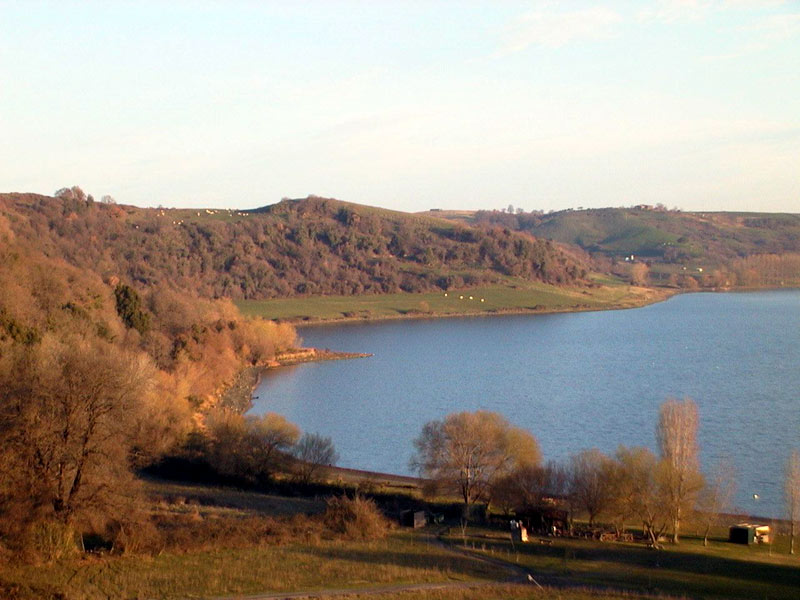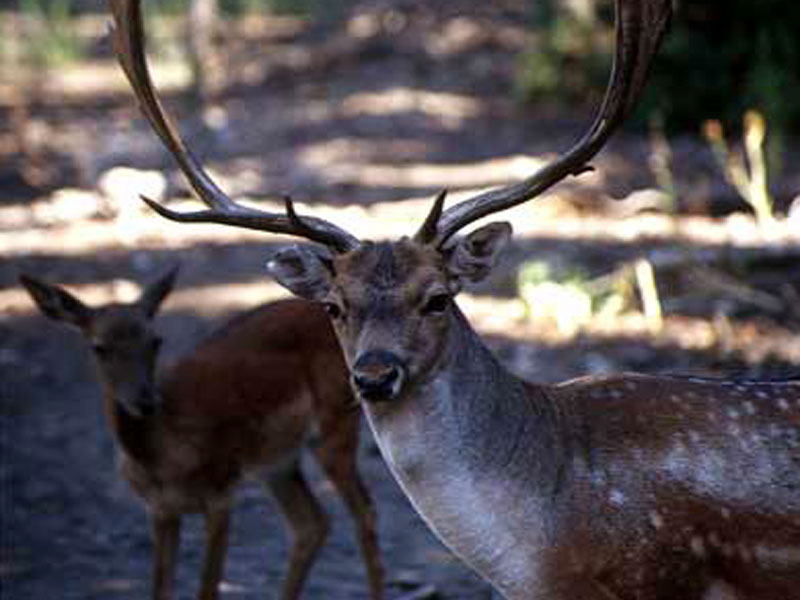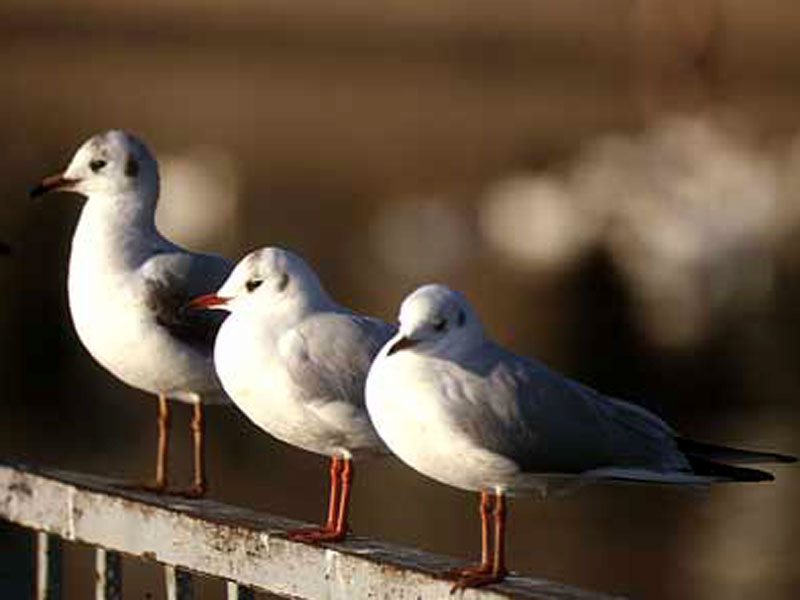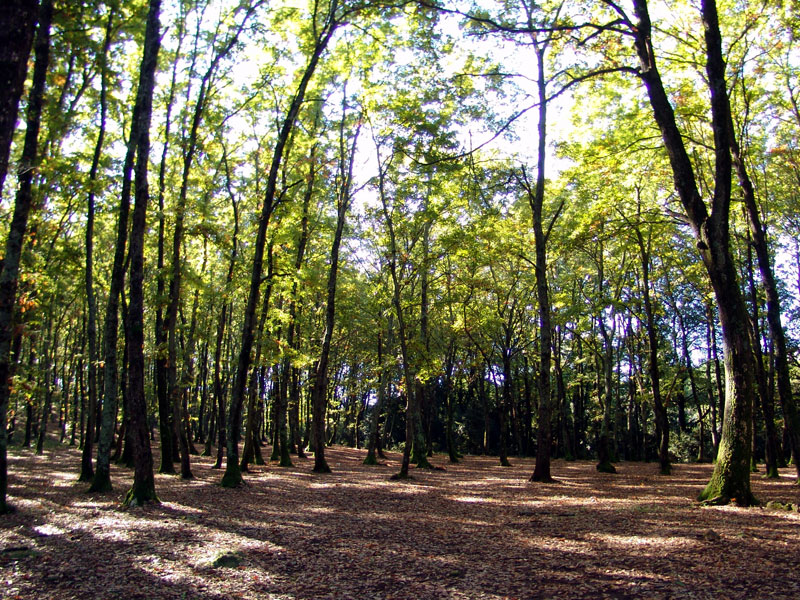Parco Naturale Regionale di Bracciano - Martignano
www.parcobracciano.itProtected Area
Identity Card
- Bracciano - Martignano Regional Nature Park:
- Land Surface Area: 16'682.00 ha
- Regions: Lazio
- Provinces: Roma, Viterbo
- Municipalities: Anguillara Sabazia, Bassano Romano, Bracciano, Campagnano di Roma, Manziana, Monterosi, Oriolo Romano, Roma, Sutri, Trevignano Romano
- Establishment Measures: LR 36 25/11/1999
- PA Official List: EUAP1079
- Park Authority: Ente Parco Regionale di Bracciano-Martignano
- Further managed Protected Areas:
- Zone di Protezione Speciale Comprensorio Bracciano-Martignano
- Zona Speciale di Conservazione Caldara di Manziana
- Zona Speciale di Conservazione Faggete di Monte Raschio e Oriolo
- Zona Speciale di Conservazione Lago di Bracciano
- Zona Speciale di Conservazione Macchia di Manziana
- Zona Speciale di Conservazione Monte Paparano
The Park
It is the most recent Park of Lazio, and well represents the volcanic landscape extending on great part of the hilly territory in the north of the Capital.
Astride the provinces of Rome and Viterbo, it includes the two homonymous lakes - whose six thousand hectares alone cover about the 40% of the Park - and the adjacent countryside. Bracciano Lake, the largest one, represents a very important water supply for the town of Rome, which exploits it in case of emergency. The lakes are situated at the bottom of a basin linked to the activity of the ancient Sabatino volcano, which reached its climax around 400,000 years ago. The area is characterized by a greater depression than it seems, since the depth of the waters of Bracciano Lake reaches the 165 meters.
The belt of hills surrounding its shores enriches the great variety of flora and fauna characterizing the Park. Grazing lands and cultivated fields draw a man-size countryside, in particular in some stretches of the protected area, like Vicarello estate.
In the woodlands covering the hills the most widespread tree is the chestnut tree, probably introduced by the Romans, but there are also high-trunk beech tree woods of great beauty, like the ones we find in Oriolo and on Mt. Termine. Of course, the richest environment can be found around the lakes. The charming towns of Trevignano, Bracciano, and Anguillara Sabazia face Bracciano Lake, while the stretch of water of Martignano lies alone among the fields.
Further information (Italian text)
History
The human presence in the Sabatino territory dates back to ancient times. At the bottom of Martignano Lake, a Clactonian tool dating back to about 300,000 years ago was found.
Small groups of hunters and pickers exploited the favorable natural conditions of the places, as demonstrated by the recent finds of flint tools dating back to the Middle and Upper Paleolithic Age.
In the Neolithic age (6,000 BC), a small group of pioneers founded a village in location "La Marmotta", along the south-eastern coast of Bracciano Lake (whose ancient name "Sabatino" derives from the pre-Indo-European "saba", meaning "pit").
Further information (Italian text)
Fauna
Talking about the wildlife, it is necessary to stress that the lakes are the most characterizing feature as far as this aspect is concerned, with winter presences of thousands of aquatic birds, whose number has definitely increased after the hunting prohibition was extended to the whole stretch of water.
Before the prohibition, the birds were almost exclusively concentrated in the bend of Trevignano, called "Le Pantane", the only area where hunting was not allowed, while today it is possible to observe groups of ducks and coots almost everywhere.
In the year 2000 and 2001 the number of aquatic birds went beyond the 10,000 units, the threshold to become a wetland of international importance. In Lazio, the area of the two lakes is inferior only to Circeo Park for the presence of aquatic birds spending the winter in the area.
Moreover, despite the proximity with Rome, in the Park there are still almost intact natural areas characterized by the presence of a great number of species.
Further information (Italian text)
Flora
Bracciano-Martignano Park, belonging to the characteristic hilly and volcanic context of Central Italy, is characterized by a great environmental variety which on the one side is linked to the richness and variety of the great freshwater ecosystems and on the other side to the presence of a nearly complete vegetation sequence going from the Mediterranean maquis to the beech tree wood.
Despite the altitude goes from a minimum of 163 meters above sea level (Arrone - Anguillara Sabazia) to a maximum of 611m (Mt. Rocca Romana - Trevignano - Sutri), thanks to the wet climate relatively rich in rain and to the fertile volcanic soils, we meet in a rapid sequence the whole range of broadleaf tree forests.
The presence of the lakes and riparian vegetation adds further richness to the vegetation variety, deriving from the integration between the natural vegetation and the mosaic of cultivated fields. The woodlands cover about 6,000 hectares, little less than the 40% of the Park territory.
Further information (Italian text)
Geology
The volcanic area of Sabatino began its activity almost 600,000 years ago, in a large flat area delimited in the west by Monti della Tolfa and by the mountains of the complex Cerite-Manziana, whose activity had just run out, and in the east by the calcareous sedimentary mountains of Soratte and Monti Cornicolani.
Further information (Italian text)











